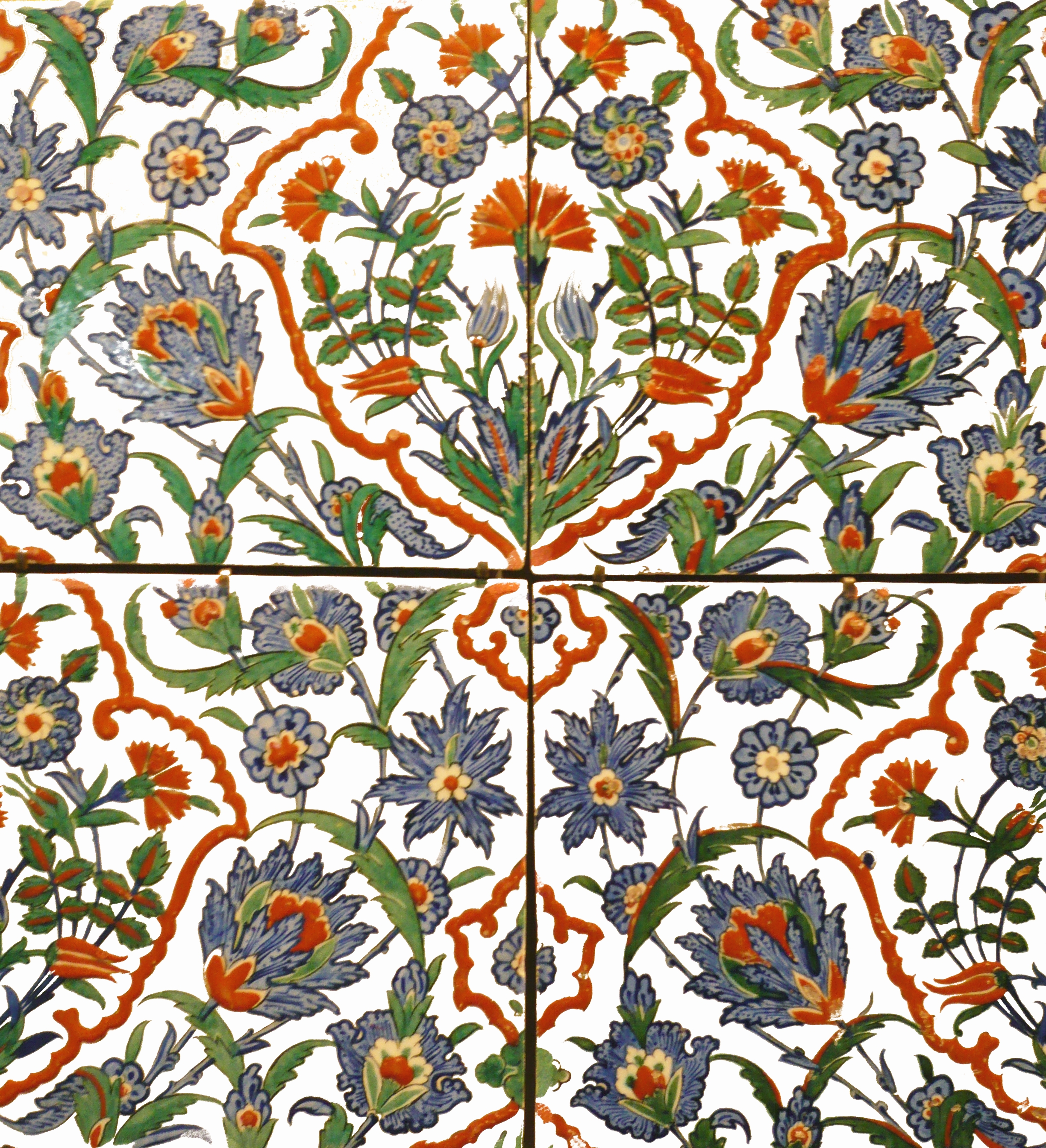These ceramic tiles covered every single mosque and palace in Turkey between the 16th and the 18th centuries. They were produced by the workshop of Iznik, a city located 100 kilometers (62 miles) from Istanbul. Commonly used in the Ottoman empire, ceramic tiles of Iznik are typical of the classic period.
First, it is a cheap and practical solution for decorating a monument. Patterns and colors are made to be identical and repetitive. Secondly, this kind of art was manufactured under the strong influence of the Ottoman court. It represents the aristocratic way of life: a symbolic paradise where the flowers permanently bloom and reach perfection. One can recognize four varieties of flower: tulip, carnation, rose, and hyacinth. With a specific shape of leaf, they constitute the saz style. Flowers and leaves are always to be found together in ceramic tiles and plates. They are also depicted with colors like blue, turquoise, green, and red.
Finally, this decoration reflects the art of the Ottoman garden, spreading over the inside and outside of every building. Moreover, actual flowers were displayed everywhere as an ultimate decoration layer for those who could afford this way of life, and those tiles are the only remnants from the past that allow us to imagine the luxury in which they lived.
- Coraline Meric
P.S. Have you seen the Ottoman carpets in European painting? Here you can admire them on paintings of Renaissance masters!


 Unknown Artist
Unknown Artist